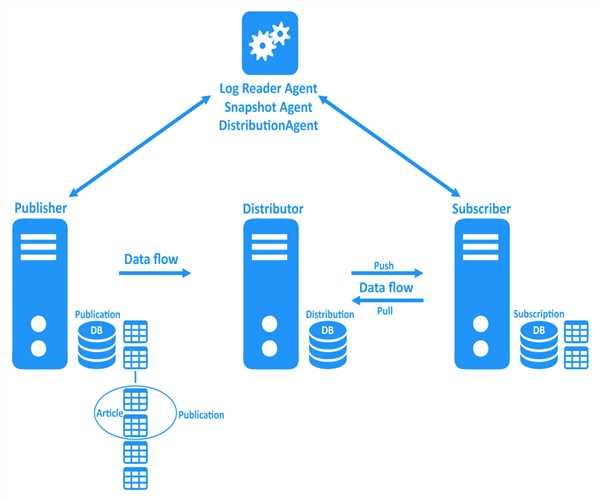SQL Server is a relational database management system developed by Microsoft. Replication is a feature of SQL Server that allows data to be copied and distributed to one or more other instances of SQL Server. There are several different types of replication available in SQL Server, each with its own unique features and use cases. In this answer, we will discuss the four main types of replication in SQL Server.
Snapshot replication: Snapshot replication is a type of replication in which an entire snapshot of the data in a database is taken and then distributed to other instances of SQL Server. This type of replication is typically used for read-only or reporting applications, as it provides a consistent snapshot of the data at a specific point in time. Snapshot replication can be configured to run on a regular schedule, or it can be initiated manually by the database administrator.

Transactional replication: Transactional replication is a type of replication that is designed to keep two or more databases in sync in real-time. In transactional replication, changes made to a database are captured and then immediately distributed to other instances of SQL Server. This type of replication is ideal for applications that require high availability and real-time synchronization of data, such as financial applications or e-commerce systems.
Merge replication: Merge replication is a type of replication that allows multiple databases to be merged into a single, unified database. In merge replication, changes made to any of the databases are tracked and then merged into a single dataset. This type of replication is ideal for applications that require distributed databases, such as sales or inventory management systems.
Peer-to-peer replication: Peer-to-peer replication is a type of replication in which data is distributed between multiple instances of SQL Server in a peer-to-peer fashion. This means that each instance of SQL Server in the replication topology can act as both a publisher and a subscriber. In peer-to-peer replication, changes made to any of the databases are automatically propagated to all other instances in the topology. This type of replication is ideal for applications that require distributed databases with a high degree of scalability and fault tolerance.
In conclusion, SQL Server provides several types of replication that can be used to copy and distribute data between multiple instances of SQL Server. Each type of replication has its own unique features and use cases, and the choice of replication type will depend on the specific needs of the application. By understanding the different types of replication available in SQL Server, database administrators can choose the right type of replication to meet their specific needs.